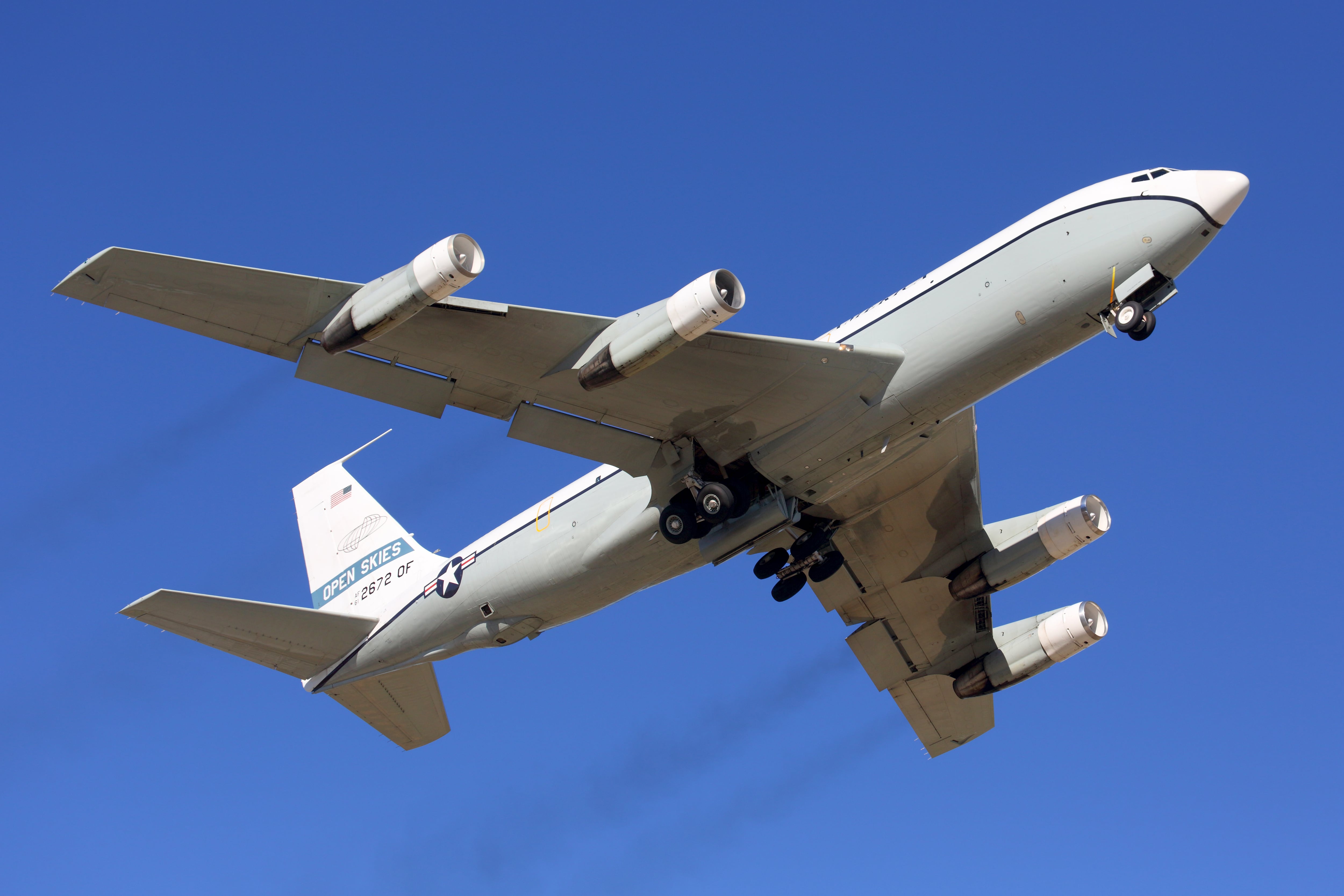OMAHA, Neb. — Farewell, hangar queen.
Offutt Air Force Base’s 45th Reconnaissance Squadron said goodbye last week to one of its most trouble-prone jets, an OC-135B that logged 36,064 flight hours and 6,135 takeoffs and landings in nearly 60 years of military use.
“Jets get old, people get old,” said Lt. Col. Andrew “Tripper” Maus, the squadron’s commander. “Bittersweet’s probably the best word for it.”
The Omaha World-Herald reports the aircraft, tail number 61-2672, spent the last 20 years flying aerial photography missions — primarily over Russia — in carrying out the international Open Skies Treaty. It was no longer needed after the Trump administration pulled out of the 34-nation pact last November.
The second Open Skies jet (tail number 61-2670), which has an equally troubled maintenance history, is slated for retirement June 4. Both will be flown to the Air Force’s desert boneyard near Tucson, Arizona, to be stored and, eventually, scrapped.
The squadron’s airmen, who call themselves the “Wildcats,” paid tribute to the venerable aircraft while slyly acknowledging its maddening tendency to break down at inconvenient times, and in inconvenient places.
“Six Seven Two has been a loyal — if unreliable, sometimes — member of the 45th fleet, flinging generations of Wildcats haphazardly into the skies of Russia,” said Capt. Taylor Pearce, who said he qualified to fly the planes only a few months ago.
RELATED

The OC-135 is the second of the 45th’s nine planes to retire in six months. Last November, the unit held a similar ceremony for an equally cranky WC-135 Constant Phoenix jet that the squadron’s chaplain memorably christened “Lucifer’s Chariot” because of the havoc it created for air crews and maintenance teams.
Boeing built the plane and delivered it to the Military Air Transport Service April 30, 1962, according to “Super Snoopers,” a 2020 book detailing the history of the 55th Wing’s fleet of C-135 type jets. Three years later, it was reconfigured for weather reconnaissance and based in California until it was transferred to the 55th Wing at Offutt. The plane was outfitted with an expensive suite of cameras, called sensors, and for nearly 20 years has been dedicated exclusively to flying Open Skies missions.
“It’s become kind of a family. You get to go out, you get to be part of a team, away from anyone else — on your own, unafraid, in a place that not many Americans go to,” said Lt. Col. Chris Reteneller, a veteran of the squadron.
The aged Open Skies aircraft date to the dawn of the jet age and lack upgraded engines and avionics that have been installed on the RC-135 Rivet Joint and Cobra Ball aircraft that make up most of the 55th Wing reconnaissance fleet at Offutt. In recent years, the OC-135s have had among the worst maintenance records in the Air Force.
Robert Hopkins III, a Gulf War-era 55th Wing pilot who is now a historian of Air Force reconnaissance flights, called them “Stone Age.”
In July 2016, No. 61-2672 made headlines in Russia and the United States when it had to abort an aerial photography mission after its landing gear failed to fully retract after takeoff and fly three hours across Russia with its gear down. It was at least the fifth in-flight mechanical breakdown for the plane that year.
“The current aircraft are old, have bad maintenance rates and are prone to breakdown in Russia, putting our crews in bad situations where they are harassed by Russian authorities,” U.S. Rep. Don Bacon, a retired Air Force brigadier general who formerly commanded the 55th Wing, told The World-Herald last year.
The Open Skies Treaty was signed in 1992, and it allowed the signatory nations to conduct supervised surveillance flights over one another’s territory. The treaty was fully implemented and flights began in 2002. The pact enjoyed broad bipartisan support, but that backing has frayed in recent years since Russia’s 2014 seizure of Crimea and its backing of rebel forces in eastern Ukraine.
At the peak of that crisis, in March 2014, a 45th Reconnaissance Squadron crew flew observers from the U.S., Canada and Estonia on a critical surveillance flight over Ukraine to gather intelligence on Russian troop build-ups.
In recent years, though, a hardline Republican faction has advocated for scrapping the Open Skies Treaty, citing alleged Russian violations. They undermined efforts by Nebraska’s all-Republican congressional delegation to fund new replacement jets for the aged OC-135s. Last year, they persuaded then-President Donald Trump to withdraw from the treaty.
Backers of the Open Skies, including U.S. allies in Europe, tried to persuade President Joe Biden to rejoin the treaty. He has not announced a decision.
“This has been a rollercoaster of a last couple of years for the program,” Maus said at Friday’s retirement ceremony. “We’ll always be ready, standing by, in case our national leaders decide to maybe rejoin a treaty, or join a new one.”
The plane’s last flight was on Feb. 1, when it was the first 55th Wing jet flown to the unit’s temporary operational headquarters at the Lincoln Airport. The Wing is using Lincoln until September 2022 while the runway at Offutt is being rebuilt.
Pearce said he was part of a crew that was supposed fly No. 61-2672 on a training flight March 2 that, perhaps fittingly, had to be scrubbed after the plane suffered what he described as a “blessed cornucopia” of maintenance problems.
“By the end of the day, we were exhausted, maintenance was exhausted, and Six Seven Two was still broken,” Pearce said. “After that, it was permanently grounded, until its flight to the boneyard next week.
“So, thank you, Six Seven Two,” Pearce added, “for giving me the experience I deserved — even if it was not the one I wanted.”








